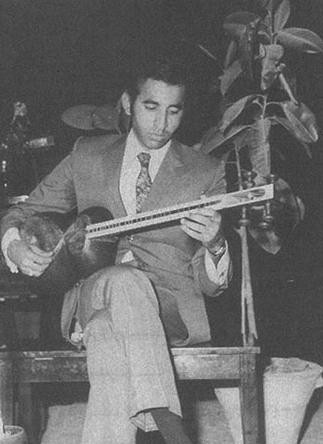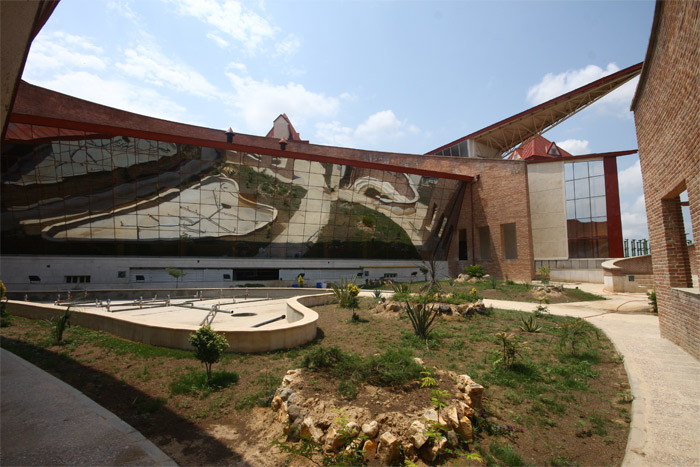Gurgan on:
[Wikipedia]
[Google]
[Amazon]
Gorgan ( fa, گرگان ; also
/ref> Gorgan maintained its independence as a Zoroastrian state even after Persia was conquered by the Muslim Arabs in the 8th century. In 1210, the city was invaded and sacked by the army of
 * Iraj Etesam, Iranian contemporary
* Iraj Etesam, Iranian contemporary
 * Golestan University
* Golestan University of Medical Sciences
* Gorgan University of Agricultural Sciences & Natural Resources
* Islamic Azad University of Gorgan
* Golestan University
* Golestan University of Medical Sciences
* Gorgan University of Agricultural Sciences & Natural Resources
* Islamic Azad University of Gorgan
KZ-Today
September 11, 2006
* Samsun,
romanize
Romanization or romanisation, in linguistics, is the conversion of text from a different writing system to the Roman (Latin) script, or a system for doing so. Methods of romanization include transliteration, for representing written text, a ...
d as ''Gorgān'', ''Gurgān'', and ''Gurgan''), formerly Esterabad ( ; also romanized as ''Astarābād'', ''Asterabad'', and ''Esterābād''), is the capital city of Golestan Province, Iran
Iran, officially the Islamic Republic of Iran, and also called Persia, is a country located in Western Asia. It is bordered by Iraq and Turkey to the west, by Azerbaijan and Armenia to the northwest, by the Caspian Sea and Turkmeni ...
. It lies approximately to the north east of Tehran, some away from the Caspian Sea
The Caspian Sea is the world's largest inland body of water, often described as the world's largest lake or a full-fledged sea. An endorheic basin, it lies between Europe and Asia; east of the Caucasus, west of the broad steppe of Central A ...
. In the 2006 census; its population was 269,226, in 73,702 families.
History
There are several archaeological sites near Gorgan, including Tureng Tepe and Shah Tepe, in which there are remains dating from theNeolithic
The Neolithic period, or New Stone Age, is an Old World archaeological period and the final division of the Stone Age. It saw the Neolithic Revolution, a wide-ranging set of developments that appear to have arisen independently in several pa ...
and Chalcolithic eras. Some other important Neolithic sites in the area are Yarim Tepe, and Sange Chaxmaq. Also, the nearby Shahroud
Shahrood ( fa, شاهرود, also Romanized as Shâhrūd, and Shahroud; also known as Shârūd) is a city and capital of Shahrood County, Semnan Province, Iran.
Situated about an altitude of 1345 m, it is located at latitude 36°25'N, longi ...
Plain has many such sites. The number of confirmed Neolithic sites on the Gorgan Plain now totals more than fifty.
According to the Greek historian Arrian, Zadracarta was the largest city of Hyrcania and site of the "royal palace". The term means "the yellow city", and it was given to it from the great number of oranges, lemons, and other fruit trees which grew in the outskirts of that city.
Hyrcania became part of the Achaemenid Empire during the reign of Cyrus the Great (559–530 BC), its founder, or his successor Cambyses (530-522 BC).
The Great Wall of Gorgan, the second biggest defensive wall in the world, was built in the Parthian and Sassanian periods.
At the time of the Sassanids, "Gurgan" appeared as the name of a city, province capital, and province.Bivar, A.D.H. "Gorgan" Encyclopædia Iranica
''Encyclopædia Iranica'' is a project whose goal is to create a comprehensive and authoritative English language encyclopedia about the history, culture, and civilization of Iranian peoples from prehistory to modern times.
Scope
The ''Encyc ...
br>online/ref> Gorgan maintained its independence as a Zoroastrian state even after Persia was conquered by the Muslim Arabs in the 8th century. In 1210, the city was invaded and sacked by the army of
Kingdom of Georgia
The Kingdom of Georgia ( ka, საქართველოს სამეფო, tr), also known as the Georgian Empire, was a medieval Eurasian monarchy that was founded in circa 1008 AD. It reached its Golden Age of political and economic ...
under command of the brothers Mkhargrdzeli.
"Old Gorgan" was destroyed during the Mongol invasion
The Mongol invasions and conquests took place during the 13th and 14th centuries, creating history's largest contiguous empire: the Mongol Empire (1206-1368), which by 1300 covered large parts of Eurasia. Historians regard the Mongol devastati ...
in the 13th century, and the center of the region was moved to what was called "Astarabad", which is currently called "Gorgan".
Gorgan with its surrounding regions was sometimes considered as part of the Tabaristan region.
Astarabad was an important political and religious city during the Qajar dynasty.

Geography and climate
The wide Dasht-e Gorgan (Plains of Gorgan) are located north of the city and geographically bounded by 37°00' - 37°30' north latitude and 54°00' - 54°30' east longitude, covering an area of about . Some east of Gorgan is the Golestan National Park, home to a large portion of the fauna of Iran. Gorgan has a humid subtropical climate ( Köppen: ''Cfa'',Trewartha
Trewartha and Andrewartha are Cornish family names (and placename, Dexter). There are places called Trewartha in the parishes of Merther, St Agnes, St Neot and Veryan.
According to the ''Handbook of Cornish Names'' by G. Pawley White, "Tre ...
: ''Cf''), with hot, humid summers and cool, wet winters. In general, Golestan has a moderate and humid climate known as "the moderate Caspian climate." The effective factors behind such a climate are: Alborz mountain range, direction of the mountains, height of the area, neighborhood to the sea, vegetation surface, local winds, altitude and weather fronts. As a result of the above factors, three different climates exist in the region: plain moderate, mountainous, and semi-arid. Gorgan valley has a semi-arid climate. The average annual temperature is and the annual rainfall is .
Notable people
Historical figures
* House of Karen, an aristocratic feudal family first attested in the Arsacid era, belonged to the region of Hyrcania. * Fakhroddin Asaad Gorgani, 11th-century Persian poet and the composer of '' Vis and Ramin''. * Abu Sa'id al-Darir al-Jurjani, 9th century astronomer and mathematician *Al-Masihi
Abu Sahl 'Isa ibn Yahya al-Masihi al-Jurjani ( fa, ابو سهل عيسى بن يحيى مسيحی گرگانی) was a Christian Persian physician,Firoozeh Papan-Matin, ''Beyond death: the mystical teachings of ʻAyn al-Quḍāt al-Hamadhā ...
, 10th century physician and teacher of Avicenna
* Abd al-Qāhir al-Jurjānī, 11th century grammarian and literary theorist
* Zayn al-Din al-Jurjani
Zayn al-Din Sayyed Isma‘il ibn Husayn Gorgani (c. 1040–1136), also spelled al-Jurjani, was a Persian 12th century royal Islamic physician from Gorgan, Iran. In addition to medical and pharmaceutical sciences, he was also an adept in theologi ...
, 12th century royal physician
* Bahram al-Da'i, 12th-century Nizari Ismaili missionary and military leader in Syria
* Fazlallah Astarabadi (Naimi)
Fażlu l-Lāh Astar-Ābādī ( fa, فضلالله استرآبادی, 1339/40 in Astarābād – 1394 in Nakhchivan), also known as Fażlullāh Tabrīzī AstarābādīIrène Mélikoff. ''Hadji Bektach: un mythe et ses avatars : genèse et évo ...
, 14th century mystic and founder of Hurufism
* Rustam Gorgani Rostam Gorgani was a mid-16th century Persian physician who lived in India.
Rostam Gorgani was the court physician of two of the rulers of the Deccan sultanates, Malik Ahmad Shah I (1490–1510) and Burhan Shah I (1510–1553), in the city of ...
, 16th century physician
* Mir Fendereski
''Mir'' (russian: Мир, ; ) was a space station that operated in low Earth orbit from 1986 to 2001, operated by the Soviet Union and later by Russia. ''Mir'' was the first modular space station and was assembled in orbit from 1986 to&n ...
, philosopher, poet and mysti
* Mir Damad, 17th century Islamic scholar and Neoplatonic philosopher
* Mirza Mehdi Khan Astarabadi, 18th century chief minister to Nader Shah
* Bibi Khatoon Astarabadi
Bibi Khānoom Astarābādi ( fa, بی بی خانم استرآبادی) (1858/9 – 1921) was a notable Iranian writer, satirist, and one of the pioneering figures in the women's movement of Iran.
Biography
Bibi Khatoon Astarabadi was born ...
, a notable writer, satirist, and one of the pioneering figures of the women's movement of Iran
* Firishta
Firishta or Ferešte ( fa, ), full name Muhammad Qasim Hindu Shah Astarabadi ( fa, مُحَمَّد قاسِم هِندو شاہ), was a Persian historian, who later settled in India and served the Deccan Sultans as their court historian. He was ...
, historian
* Sardar Rafie Yanehsari, Governor of Astarabad
* House of Bagheri, a historical house with 7 yards from 18th century that currently has been used as a boutique hotel, Haft Paykar
Contemporary figures
 * Iraj Etesam, Iranian contemporary
* Iraj Etesam, Iranian contemporary architect
An architect is a person who plans, designs and oversees the construction of buildings. To practice architecture means to provide services in connection with the design of buildings and the space within the site surrounding the buildings that h ...
, educator, and author; born in Gorgan.
*Nader Ebrahimi
Nader Ebrahimi ( fa, نادر ابراهیمی; April 3, 1936 – June 5, 2008) was an Iranian writer, screenwriter, photographer, director, actor, songwriter, and an outstanding contemporary novelist.
Son to Ata-ol-molk Ebrahimi, who was a ...
, author, poet, director, and researcher
*Hossein Khanzadi
Hossein Khanzadi ( fa, حسین خانزادی) is an Iranian hovercraft pilot in the regular military (''Artesh'') who served as the Commander of the Islamic Republic of Iran Navy from November 2017 to August 2021. On 17 August 2021, Rear Admir ...
, admiral in the Iranian Navy
*Mohammad Reza Lotfi
Mohammad-Reza Lotfi ( fa, محمدرضا لطفی; 1 January 1947 – 2 May 2014) was an Iranian classical musician renowned for his mastery of the tar and setar. He collaborated with singers such as Mohammad-Rezā Shajarian, Hengameh Akhavan, ...
, Traditional Persian musician
* Maryam Zandi, photographer
Education
 * Golestan University
* Golestan University of Medical Sciences
* Gorgan University of Agricultural Sciences & Natural Resources
* Islamic Azad University of Gorgan
* Golestan University
* Golestan University of Medical Sciences
* Gorgan University of Agricultural Sciences & Natural Resources
* Islamic Azad University of Gorgan
Sports
Shahrdari Gorgan competes in theIranian Basketball Super League
The Iranian Basketball Super League (IBSL) is a professional men's basketball league in Iran. It was founded in 1998. The current champions is Shahrdari Gorgan. The league follows the promotion and relegation system in which the worst two te ...
.
Currently the main football team of Gorgan is Etka Gorgan F.C., which competes in the Azadegan League
The Azadegan League ( fa, ليگ آزادگان, ''Lig-e Âzâdegân''), also known as League 1 ( fa, لیگ یک, ''Lig-e Yek''), is the second highest division of professional football in Iran. It was the top-level football league in Iran fro ...
.
Sister cities
* Aktau, KazakhstanSeptember 11, 2006
Turkey
Turkey ( tr, Türkiye ), officially the Republic of Türkiye ( tr, Türkiye Cumhuriyeti, links=no ), is a transcontinental country located mainly on the Anatolian Peninsula in Western Asia, with a small portion on the Balkan Peninsula ...
(2006)
See also
* Gorgan International Airport * al-Jurjani * Gorgan-rud River *Gurganj
Konye-Urgench ( tk, Köneürgenç / Көнеүргенч; fa, کهنه گرگانج, ''Kuhna Gurgānj'', literally "Old Gurgānj"), also known as Old Urgench or Urganj, is a city of about 30,000 inhabitants in north Turkmenistan, just south fro ...
References
External links
{{Authority control Cities in Golestan Province Hyrcania Iranian provincial capitals